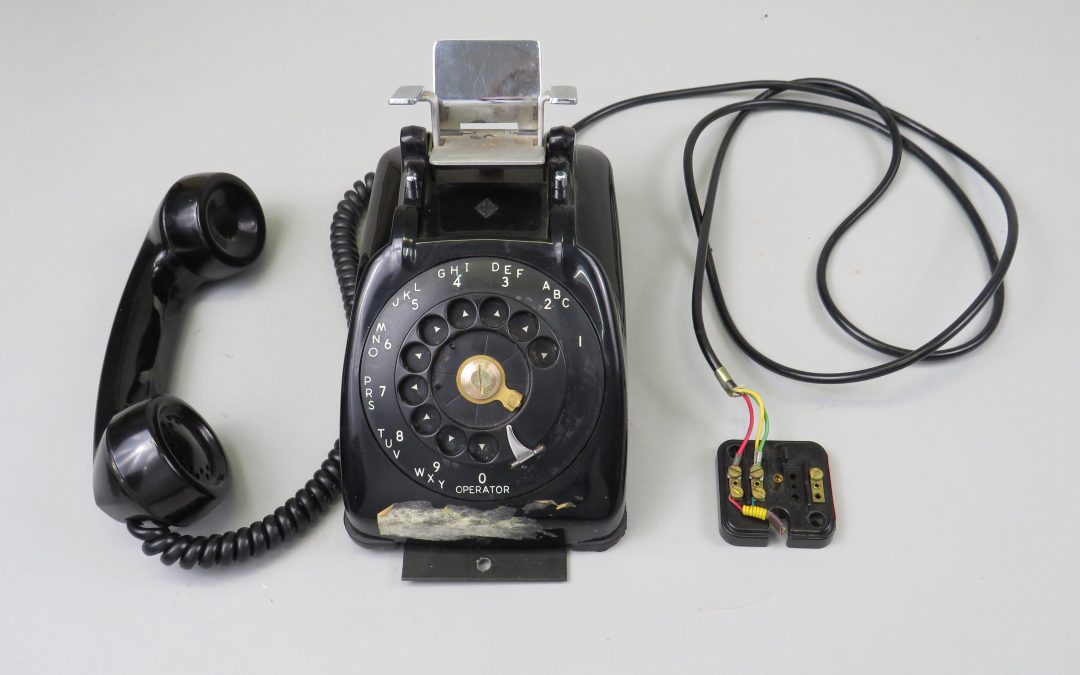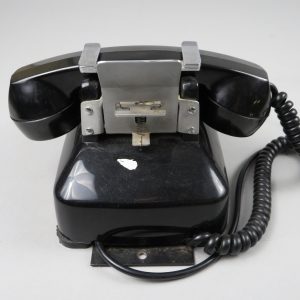
(13/25)
In honour of our 25th anniversary, we are highlighting 25 never-before-seen artifacts from within our collections. This week, we are dialing it back to circa 1960 and featuring a rotary telephone.

At the height of the Cold War, telecommunications was essential as it allowed the government to communicate with one another as well as with the public to provide updates and next steps if a nuclear attack was detected. This rotary telephone from the Diefenbunker’s collections was specifically designed to withstand extreme movement or force from a nuclear blast — it has a special bracket over the handset to keep it in place. The back of the bracket is spring loaded, allowing the user to press the back silver plate inward to release the two silver prongs covering the receiver. In addition to this, attached at the base of the telephone is a large rectangular metal plate with holes for screws so that the telephone can be securely affixed to a desk or table to further prevent movement. This design was carefully thought out, taking many aspects of potential nuclear fallout into consideration.

Rotary Telephone, Diefenbunker Museum: 2000.024.001
If the Diefenbunker were to lose power during the Cold War, these rotary phones, contingent on landline cables being intact, could still function. As these telephones operated via landlines, a conventional telecommunications connection using cable laid across land on poles or underground, they would have ultimately been responsible for keeping communication lines open. These telephones draw up their power from phone lines, batteries, or a plug-in adapter. They then convert electrical signals into sound waves that can be heard through the receiver. The process of “pulse dialing” temporarily interrupts the electric current flowing down the line as the rotary dial is turned to a digit. The breaking of this connection sounds like a series of clicks, which is what listeners hear when dialing a rotary phone. The sequence of rapid pulses generated indicate to the local exchange which phone number is trying to be reached.
“Pulse dialing” is also commonly referred to as “rotary dialing,” and was first introduced to the world in 1919 by the Bell System, a system of telecommunications companies led by the Bell Telephone Company that dominated the industry in North America for over one hundred years. This form of dialing gained popularity and eventually replaced all human operators after World War II.
Want to learn more about rotary telephones? Book your visit today and experience the Diefenbunker by decade — immerse yourself in office spaces on the 300 Level which showcase an evolving timeline of Cold War technology.

Stay tuned as we continue to celebrate our 25th anniversary by uncovering stories from our museum’s collections.
